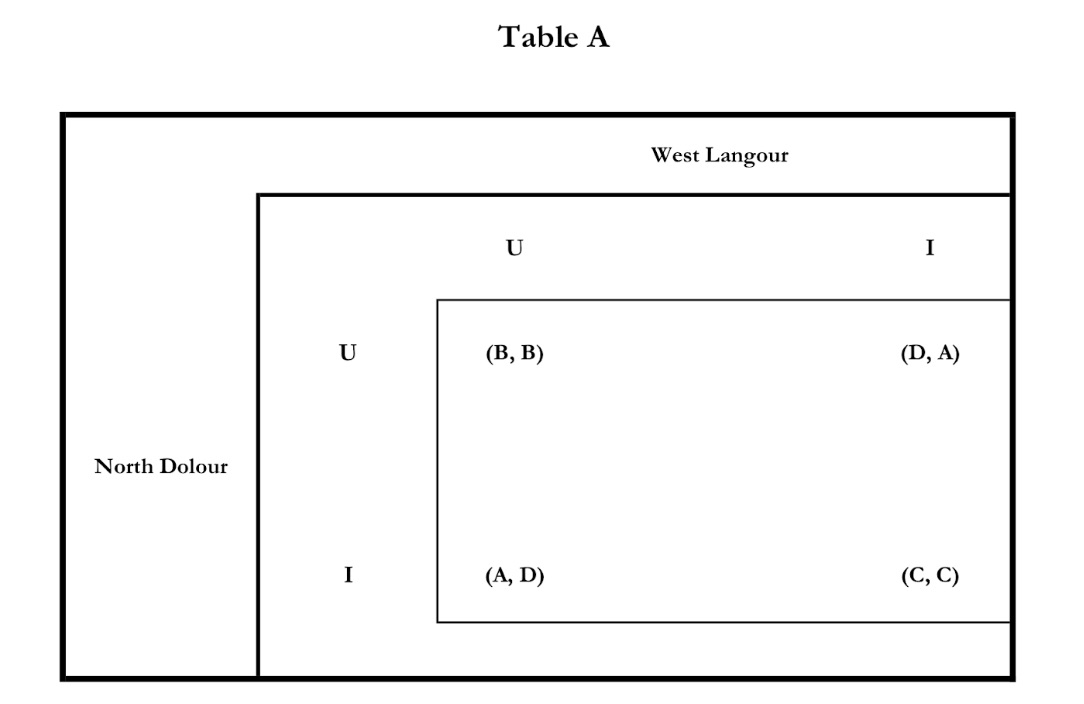Question
In a recent class meeting we discussed what is formally known as the paradox of sovereignty: a sovereign government cannot by definition credibly (believably) commit
In a recent class meeting we discussed what is formally known as the "paradox of sovereignty:" a sovereign government cannot by definition "credibly" (believably) commit itself to carrying out the terms of a contract or treaty with other sovereign governments. Let's illustrate this idea through a simple example. The respective leaders of the governments of the countries of North Dolour and West Languor desire nothing more than reelection and, consequently, respond strongly to the perceived wishes of their electorates. The voters of each country are virtually unanimous in their desire to mitigate climate change by lowering the emission of GHGs by their domestic industry. Despite their countries being trading rivals, under the pressure of voter opinion, the two governments have signed a climate change treaty. The treaty requires each country to adopt strict regulations restricting the amounts of GHG its industry emits on an annual basis so that each reduces its emissions by 50% by 2030. Industry in each country will bear significant reductions in their current and future profitability from such drastic reductions and,should this happen, the electorate in each country will suffer signficant unemployment relative to its current levels. While their greatest concern is climate change, voters in each country would prefer the combination of a reduction in the joint GHG emissions from both countries with no change in their unemployment rate. If this is not possible, they prefer the combination of reduced joint GHG emissions and greater unemployment to having no treaty at all, even if employment remains stable. In the most general possible illustration of this situation, assume that the leader of each country knows his greatest likelihood of the reelection of occurs from the combination of a strong reduction in joint GHG emissions and stable employment, which we denote by "A"; by "B" the reelection likelihood when domestic voters receive their second choice of a strong emissions reduction but increased unemployment; by "C" the reelection chances when voters see a weak reduction in emissions but stable employment; and by "D" the incumbent's chances of reelection when voters see a weak emissions reduction but increased unemployment. The choices of the leader of each country is to strictly uphold the terms of the treaty ("") or to ignore ("I") the requirements of the treaty in order to benefit the majority of domestic voters who are employed by domestic industry. The choices of each leader and the outcomes of all combinations of those choices by both leaders are depicted in Table A.A. Denoting the respective choices of the governments of North Dolour and West Languor by {X, Y} determine the equilibrium outcome of this episode.B. What does this imply for the ability of actual governments to implement and adhere to the terms of an actual climate change treaty they sign?

North Dolour Table A U West Langour I U (B, B) (D, A) I (A, D) (C, C)
Step by Step Solution
There are 3 Steps involved in it
Step: 1

Get Instant Access to Expert-Tailored Solutions
See step-by-step solutions with expert insights and AI powered tools for academic success
Step: 2

Step: 3

Ace Your Homework with AI
Get the answers you need in no time with our AI-driven, step-by-step assistance
Get Started


